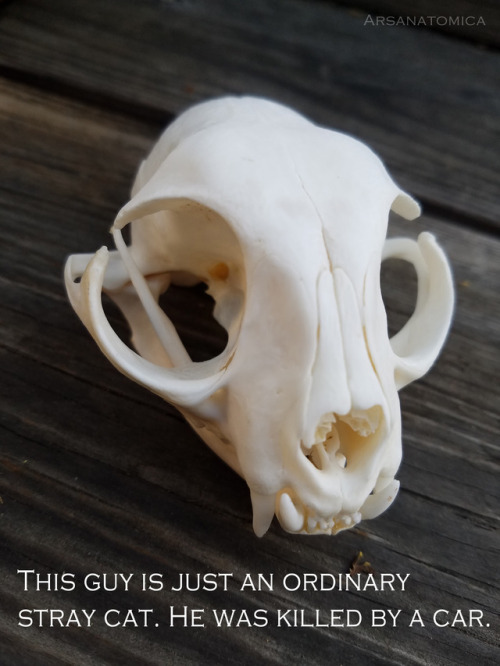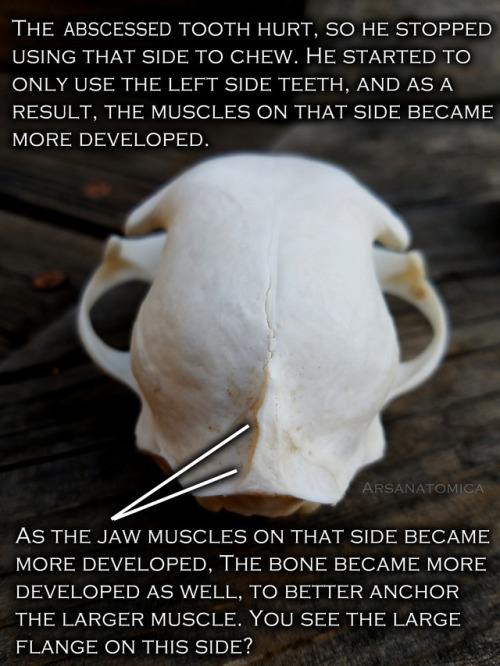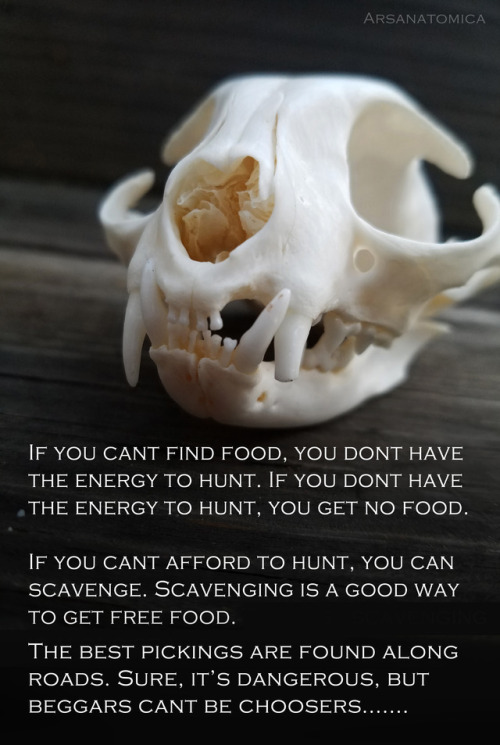But That’s Not All It Can Do. Microsoft And NASA Teamed Up To “bring” You, Yes You, To Mars.










But that’s not all it can do. Microsoft and NASA teamed up to “bring” you, yes you, to Mars.
Follow @the-future-now
More Posts from T-sci-eng and Others
Solar System: Things to Know This Week
10 Tools for the Armchair Astronaut, or How to Explore the Solar System from Home
At this very moment, spacecraft are surveying the solar system, from Mars, to Saturn, to Pluto and beyond. Now you can ride along to see the latest discoveries from deep space. For this week’s edition of 10 Things, we’ve assembled a toolkit of 10 essential resources for the desktop astronaut.

1. It’s Like Facebook, but for Planets
Or is it more of a Hitchhiker’s Guide to the Solar System? Whatever one calls it, our planets page offers quick rundowns, as well as in-depth guides, for all the major bodies in the solar system. Explore from the sun all the way to the Oort Cloud.
+ Peruse the planets + See how objects in the solar system stack up against each other

2. Keep Your Eyes on This One
If you still haven’t tried Eyes on the Solar System, you’re missing out. This free, downloadable simulation app lets you tour the planets and track the past, current and future positions of spacecraft–all in 3D. Eyes on the Solar System uses real NASA data to help you take a virtual flight across both space and time.
+ Prepare for departure

3. Dateline: Deep Space
With so much exploration underway, discoveries and new insights into the solar system come at a pace that borders on bewildering. NASA is rewriting the textbooks, literally, on a regular basis. Relax, though: there are several easy ways to stay up to date with what’s happening in space.
+ See the latest headlines + Stay connected on social media: Twitter, Facebook, Instagram + Find more top NASA social media accounts

4. Space? There’s an App for That
NASA offers phone and tablet apps for star gazing, pictures, news, 3D tours, satellite tracking, live NASA TV and many other kinds of info.
+ Start downloading + See other cool apps

5. A (Very) Long Distance Call
We’re in constant communication with spacecraft all over the solar system. The Deep Space Network is a global network of giant antenna dishes that makes it possible. With this online app, you can learn how it works – and even see which spacecraft are phoning home right now.
+ Deep Space Network (DSN) Now

6. Collect ‘Em All
Spacecraft 3D is an augmented reality (AR) application that lets you learn about and interact with a variety of spacecraft that are used to explore our solar system, study Earth and observe the universe. Print out the AR target and your camera will do the rest, making the spacecraft appear in 3D right in front of you. Learn more about these robotic explorers as they pop up on your desk, in your hand, or on your dog’s head.
+ Download Spacecraft 3D + See more cool 3-D resources from NASA

7. Ever Wanted to Drive a Mars Rover?
This site will give you a 3D look at the Mars Curiosity rover, along with some of the terrain it has explored. It will even let you take the controls.
+ Experience Curiosity

8. More E-Ticket Attractions
But wait, there’s more. NASA offers a variety of other fascinating (and free) online experiences, all based on actual data from real missions. Here are a few to explore:
+ Mars Trek + Vesta Trek + Moon Trek

9. The Universe Is Our Classroom
Studying the solar system makes for a compelling route into learning and teaching science, engineering and math. We have some great places to start.
+ Find resources for teachers + Build your own solar system with your classroom

10. Bring It on Home
After you’ve toured the far reaches of the solar system, you can always come home again. When you have spent time studying the harsh conditions on our neighboring planets, the charms of a unique paradise come into sharp focus, the place we call Earth.
+ Watch a real-time video feed from Earth orbit + See a daily global view of our planet from a million miles away + Hold the earth in your hands with the Earth Now mobile app
Discover more lists of 10 things to know about our solar system HERE.
Follow us on Tumblr for your regular dose of space: http://nasa.tumblr.com
5 things you didn’t know about... Concorde

Credit: British Airways
1. Operated by British Airways and Air France, Concorde went into operation in 1976, following 5,000 hours of flight testing. Seating 100 passengers, it catered to the privileged or business traveller. Concorde was withdrawn from service in 2003, after 27 years.
2. The most popular route for the British carrier was from London Heathrow to New York JFK in just three hours and 20 minutes. Cruising at Mach 2.02, passengers experienced heights of 60,000ft, a vantage point from which they could see the curvature of the Earth below and dark skies above at midday.
3. The four Olympus 593 engines that powered Concorde were twin spool turbojets.
4. The materials used for Concorde’s structure needed to withstand temperature extremes – subsonic speeds, the aircraft fuselage would experience lows of -35°C, but at Mach 2 the temperature reached 127°C at the nose.
5. Concorde’s long, pointed nose cone played a key role in landing. Formed of resin-bonded glass fibre, as metals would interfere with the signals detecting storm clouds, the hydraulically powered nose cone could be moved independently to an angle of 12.5° on landing, allowing the pilot to see the approaching runway.
To find out more see page 60 of the June issue of Materials World or visit http://bit.ly/2qDPjJC.


Hackaday Useful Tools Links
So I am an avid reader of Hackaday for a long time now and they have been putting out a lot of great introductions to tools and processes to get makers up to speed on the resources that are available. This is just a splattering of links that I have found lately that you guys might be interested in.
DC Motors
Lessons in Small Scale Manufacturing
Grinding Gears: Figuring out gear ratios
Tools of the trade: Injection Molding
Are todays engineers worse?
How to nail a technical presentation
Tools of the trade: Vacuum Forming
The Art and Science of Bending Sheetmetal
A how-to of designing, fab, and assembly with structural framing systems (t slot)
Machine learning foundations
A machine shop in a box
How to: Cold resin casting
Join the GUI generation: Qtcreator
Do you guys have any other great resources that you’d like to share and/or are you enjoying this type of content?

Vantablack absorbs 99% of light and is the darkest material ever made.

This Week in Chemistry: The world’s first nanocar race, and making a painkiller last longer using a metal-organic framework: https://goo.gl/TaS7HG




The great esGape
Unlike most elemental metals, gallium will melt in the palm of your hand, or at temperatures above about 30 °C. And that’s not the only unusual thing about this element: It also expands when it freezes. In this video series, warm liquid gallium is poured into a glass vial (top), followed by a little clean-up. As the gallium cools back down to room temperature, it starts to bubble up as its volume expands (third video down). Overall, it expands 3%, shattering the vial (bottom). Water is a substance commonly used to demonstrate this sort of expansion, growing about 8% in volume when frozen, but other elements exhibit this behavior as well, including silicon and plutonium. The final two clips have been accelerated 200 times and 10 times, respectively.
Credit: Periodictable.ru (watch the whole video here; GIFs created by rudescience)
More ChemPics and C&EN stories:
Liquid metals take shape
A melting liquid
Rolling out liquid-metal motors
Puritans, Goths, avant-garde artists, hell-raising poets and fashion icon Coco Chanel all saw something special in it. Now black, that most enigmatic of colours, has become even darker and more mysterious.
A British company has produced a “strange, alien” material so black that it absorbs all but 0.035 per cent of visual light, setting a new world record. To stare at the “super black” coating made of carbon nanotubes – each 10,000 times thinner than a human hair – is an odd experience. It is so dark that the human eye cannot understand what it is seeing. Shapes and contours are lost, leaving nothing but an apparent abyss.
It’s a good Sunday. 🤗
To get the Sunday week summary delivered to your inbox subscribe here.
Experimental Saturday
Meet the ‘400k pie’

Banana whey protein bread

Interesting and fun stuff
Work vs Hobbies [Comic]
Use a Pencil to Freeze Sauce into Usable Portions
Bake the Perfect Pound Cake
Best Chocolate Chip Cookie Bake Off
Recipe lists
10 PUMPKIN SPICE FAVORITES
Ten Minute Meal Prep Recipes and Prep Ideas
10 DESSERTS AND COOKIES TO TRY FOR FALL
20 PUMPKIN RECIPES FOR FALL
25 APPLE RECIPES TO GET YOU READY FOR FALL
19 OF THE BEST EASY & HEALTHY ONE PAN MEALS
Our Favorite Pumpkin Recipes
Food days
Cheeseburger 🍔
Butterscotch Pudding
Rum Punch 🍹
Pecan Cookies
White Chocolate
Top recipes!
Classic Snickerdoodles

Fresh & Flavorful Strawberry Cake Recipe

Double Chocolate Brownies

RED VELVET SUGAR COOKIES RECIPE

BROWN SUGAR POUND CAKE

Ginger Fig Tart with Chestnut-Almond Crust {vegan & gluten-free}

RED VELVET MACARONS WITH CREAM CHEESE FROSTING

My Mom’s Homemade Spaghetti and Meat Sauce

APPLE FRITTER PANCAKES

Bacon Tomato and Spinach Spaghetti

PUMPKIN PIE SPICE PROTEIN SMOOTHIES

Apple Spice Ricotta Donuts

pumpkin gnocchi with sage butter sauce

Mashed Potato Fries

QUICK POTATO ROLLS

Follow for recipes
Get your FoodFfs stuff here
Solar System: Things to Know This Week
Reaching out into space yields benefits on Earth. Many of these have practical applications — but there’s something more than that. Call it inspiration, perhaps, what photographer Ansel Adams referred to as nature’s “endless prospect of magic and wonder.“
Our ongoing exploration of the solar system has yielded more than a few magical images. Why not keep some of them close by to inspire your own explorations? This week, we offer 10 planetary photos suitable for wallpapers on your desktop or phone. Find many more in our galleries. These images were the result of audacious expeditions into deep space; as author Edward Abbey said, "May your trails be crooked, winding, lonesome, dangerous, leading to the most amazing view.”

1. Martian Selfie
This self-portrait of NASA’s Curiosity Mars rover shows the robotic geologist in the “Murray Buttes” area on lower Mount Sharp. Key features on the skyline of this panorama are the dark mesa called “M12” to the left of the rover’s mast and pale, upper Mount Sharp to the right of the mast. The top of M12 stands about 23 feet (7 meters) above the base of the sloping piles of rocks just behind Curiosity. The scene combines approximately 60 images taken by the Mars Hand Lens Imager, or MAHLI, camera at the end of the rover’s robotic arm. Most of the component images were taken on September 17, 2016.
800 x 600
1024 x 768
1280 x 1024
1600 x 1200
1280 x 800
1440 x 900
1920 x 1200

2. The Colors of Pluto
NASA’s New Horizons spacecraft captured this high-resolution, enhanced color view of Pluto on July 14, 2015. The image combines blue, red and infrared images taken by the Ralph/Multispectral Visual Imaging Camera (MVIC). Pluto’s surface sports a remarkable range of subtle colors, enhanced in this view to a rainbow of pale blues, yellows, oranges, and deep reds. Many landforms have their own distinct colors, telling a complex geological and climatological story that scientists have only just begun to decode.
800 x 600
1024 x 768
1280 x 1024
1600 x 1200
1280 x 800
1440 x 900
1920 x 1200

3. The Day the Earth Smiled
On July 19, 2013, in an event celebrated the world over, our Cassini spacecraft slipped into Saturn’s shadow and turned to image the planet, seven of its moons, its inner rings — and, in the background, our home planet, Earth. This mosaic is special as it marks the third time our home planet was imaged from the outer solar system; the second time it was imaged by Cassini from Saturn’s orbit, the first time ever that inhabitants of Earth were made aware in advance that their photo would be taken from such a great distance.
800 x 600
1024 x 768
1280 x 1024
1600 x 1200
1280 x 800
1440 x 900
1920 x 1200

4. Looking Back
Before leaving the Pluto system forever, New Horizons turned back to see Pluto backlit by the sun. The small world’s haze layer shows its blue color in this picture. The high-altitude haze is thought to be similar in nature to that seen at Saturn’s moon Titan. The source of both hazes likely involves sunlight-initiated chemical reactions of nitrogen and methane, leading to relatively small, soot-like particles called tholins. This image was generated by combining information from blue, red and near-infrared images to closely replicate the color a human eye would perceive.
800 x 600
1024 x 768
1280 x 1024
1600 x 1200
1280 x 800
1440 x 900
1920 x 1200

5. Catching Its Own Tail
A huge storm churning through the atmosphere in Saturn’s northern hemisphere overtakes itself as it encircles the planet in this true-color view from Cassini. This picture, captured on February 25, 2011, was taken about 12 weeks after the storm began, and the clouds by this time had formed a tail that wrapped around the planet. The storm is a prodigious source of radio noise, which comes from lightning deep within the planet’s atmosphere.
800 x 600
1024 x 768
1280 x 1024
1600 x 1200
1280 x 800
1440 x 900
1920 x 1200

6. The Great Red Spot
Another massive storm, this time on Jupiter, as seen in this dramatic close-up by Voyager 1 in 1979. The Great Red Spot is much larger than the entire Earth.
800 x 600
1024 x 768
1280 x 1024
1600 x 1200
1280 x 800
1440 x 900
1920 x 1200

7. More Stormy Weather
Jupiter is still just as stormy today, as seen in this recent view from NASA’s Juno spacecraft, when it soared directly over Jupiter’s south pole on February 2, 2017, from an altitude of about 62,800 miles (101,000 kilometers) above the cloud tops. From this unique vantage point we see the terminator (where day meets night) cutting across the Jovian south polar region’s restless, marbled atmosphere with the south pole itself approximately in the center of that border. This image was processed by citizen scientist John Landino. This enhanced color version highlights the bright high clouds and numerous meandering oval storms.
800 x 600
1024 x 768
1280 x 1024
1600 x 1200
1280 x 800
1440 x 900
1920 x 1200

8. X-Ray Vision
X-rays stream off the sun in this image showing observations from by our Nuclear Spectroscopic Telescope Array, or NuSTAR, overlaid on a picture taken by our Solar Dynamics Observatory (SDO). The NuSTAR data, seen in green and blue, reveal solar high-energy emission. The high-energy X-rays come from gas heated to above 3 million degrees. The red channel represents ultraviolet light captured by SDO, and shows the presence of lower-temperature material in the solar atmosphere at 1 million degrees.
800 x 600
1024 x 768
1280 x 1024
1600 x 1200
1280 x 800
1440 x 900
1920 x 1200

9. One Space Robot Photographs Another
This image from NASA’s Mars Reconnaissance Orbiter shows Victoria crater, near the equator of Mars. The crater is approximately half a mile (800 meters) in diameter. It has a distinctive scalloped shape to its rim, caused by erosion and downhill movement of crater wall material. Since January 2004, the Mars Exploration Rover Opportunity has been operating in the region where Victoria crater is found. Five days before this image was taken in October 2006, Opportunity arrived at the rim of the crater after a drive of more than over 5 miles (9 kilometers). The rover can be seen in this image, as a dot at roughly the “ten o'clock” position along the rim of the crater. (You can zoom in on the full-resolution version here.)
800 x 600
1024 x 768
1280 x 1024
1600 x 1200
1280 x 800
1440 x 900
1920 x 1200

10. Night Lights
Last, but far from least, is this remarkable new view of our home planet. Last week, we released new global maps of Earth at night, providing the clearest yet composite view of the patterns of human settlement across our planet. This composite image, one of three new full-hemisphere views, provides a view of the Americas at night from the NASA-NOAA Suomi-NPP satellite. The clouds and sun glint — added here for aesthetic effect — are derived from MODIS instrument land surface and cloud cover products.
Full Earth at night map
Americas at night
Discover more lists of 10 things to know about our solar system HERE.
Make sure to follow us on Tumblr for your regular dose of space: http://nasa.tumblr.com
-
 shiko-man liked this · 4 months ago
shiko-man liked this · 4 months ago -
 zygomatikprocess liked this · 1 year ago
zygomatikprocess liked this · 1 year ago -
 paracinaedus liked this · 2 years ago
paracinaedus liked this · 2 years ago -
 rosemaria7691 reblogged this · 3 years ago
rosemaria7691 reblogged this · 3 years ago -
 rosemaria7691 liked this · 3 years ago
rosemaria7691 liked this · 3 years ago -
 mademoisellejuilette liked this · 3 years ago
mademoisellejuilette liked this · 3 years ago -
 babygirlpoppy reblogged this · 4 years ago
babygirlpoppy reblogged this · 4 years ago -
 babygirlpoppy liked this · 4 years ago
babygirlpoppy liked this · 4 years ago -
 rxinbowtrxveler liked this · 5 years ago
rxinbowtrxveler liked this · 5 years ago -
 noli-tempus-perdere reblogged this · 5 years ago
noli-tempus-perdere reblogged this · 5 years ago -
 tash-pointoh liked this · 6 years ago
tash-pointoh liked this · 6 years ago -
 just-zz reblogged this · 6 years ago
just-zz reblogged this · 6 years ago -
 just-zz liked this · 6 years ago
just-zz liked this · 6 years ago -
 odd-birdd reblogged this · 6 years ago
odd-birdd reblogged this · 6 years ago -
 raylind23 reblogged this · 6 years ago
raylind23 reblogged this · 6 years ago -
 beanlop liked this · 6 years ago
beanlop liked this · 6 years ago -
 bunnyboilergold reblogged this · 7 years ago
bunnyboilergold reblogged this · 7 years ago -
 feattaemin reblogged this · 7 years ago
feattaemin reblogged this · 7 years ago -
 feattaemin liked this · 7 years ago
feattaemin liked this · 7 years ago -
 americas-suitetart reblogged this · 7 years ago
americas-suitetart reblogged this · 7 years ago -
 idonthaveagoodnametoputhere liked this · 7 years ago
idonthaveagoodnametoputhere liked this · 7 years ago -
 sharon1903 reblogged this · 7 years ago
sharon1903 reblogged this · 7 years ago -
 miomaura reblogged this · 7 years ago
miomaura reblogged this · 7 years ago -
 peculiar-is-fine reblogged this · 7 years ago
peculiar-is-fine reblogged this · 7 years ago -
 peculiar-is-fine liked this · 7 years ago
peculiar-is-fine liked this · 7 years ago -
 blue-marmol liked this · 7 years ago
blue-marmol liked this · 7 years ago -
 inclaimof27 reblogged this · 7 years ago
inclaimof27 reblogged this · 7 years ago -
 logan9900 liked this · 7 years ago
logan9900 liked this · 7 years ago -
 thefujoshicute liked this · 7 years ago
thefujoshicute liked this · 7 years ago -
 iriwhite-blog reblogged this · 7 years ago
iriwhite-blog reblogged this · 7 years ago -
 iriwhite-blog liked this · 7 years ago
iriwhite-blog liked this · 7 years ago -
 mgkloveworld liked this · 7 years ago
mgkloveworld liked this · 7 years ago -
 grawr-doodles liked this · 7 years ago
grawr-doodles liked this · 7 years ago -
 lostandfoundit33 reblogged this · 7 years ago
lostandfoundit33 reblogged this · 7 years ago -
 yauticus liked this · 7 years ago
yauticus liked this · 7 years ago -
 mibiddnosakiy-blog liked this · 7 years ago
mibiddnosakiy-blog liked this · 7 years ago






